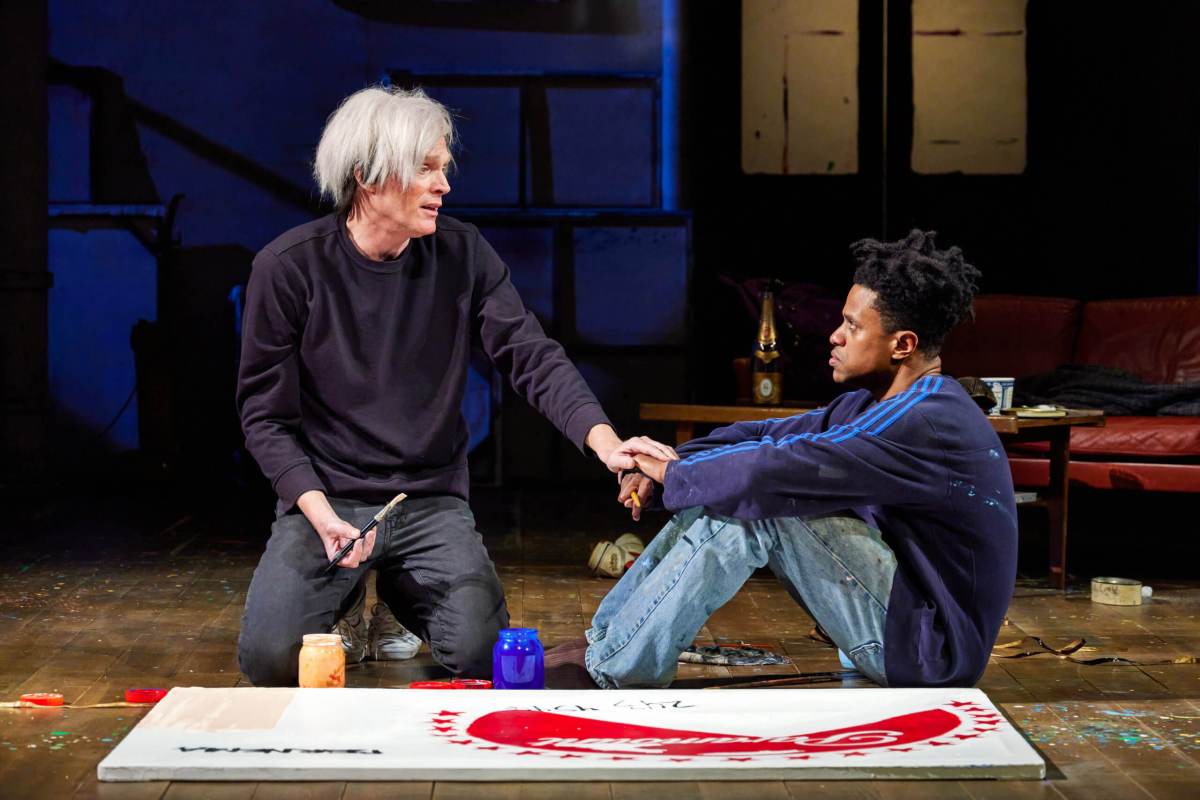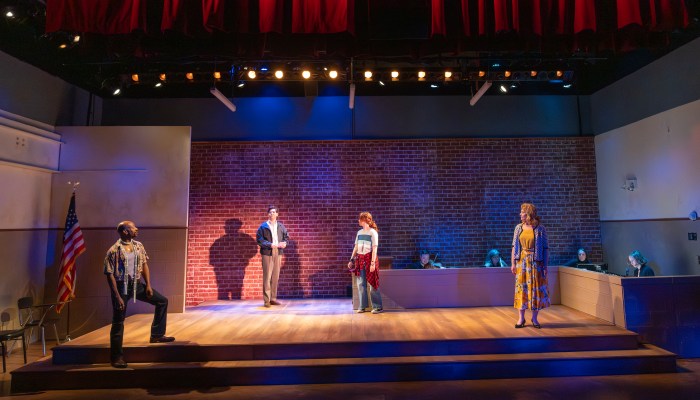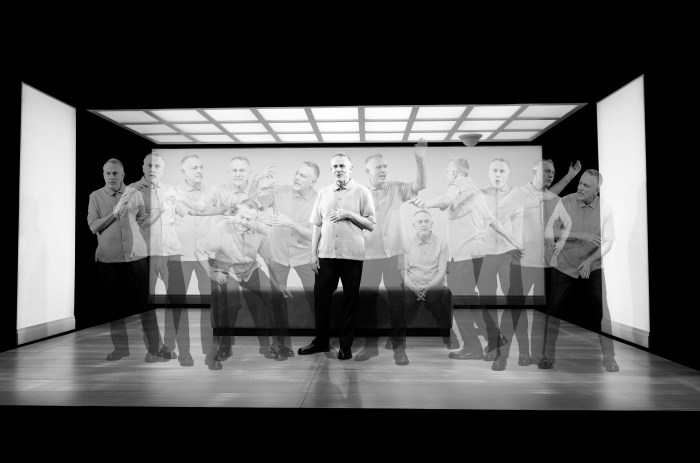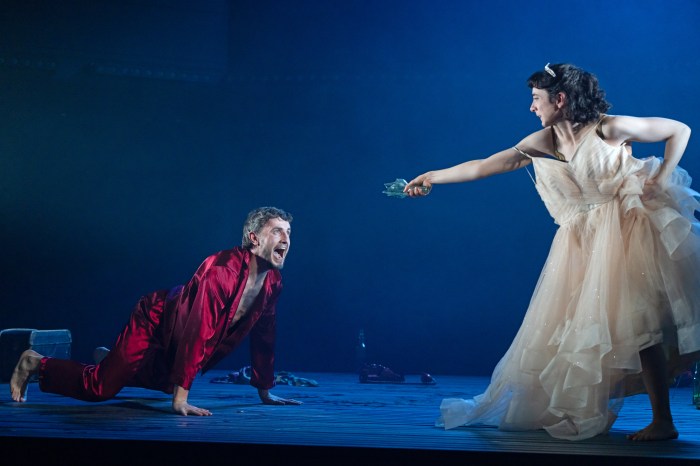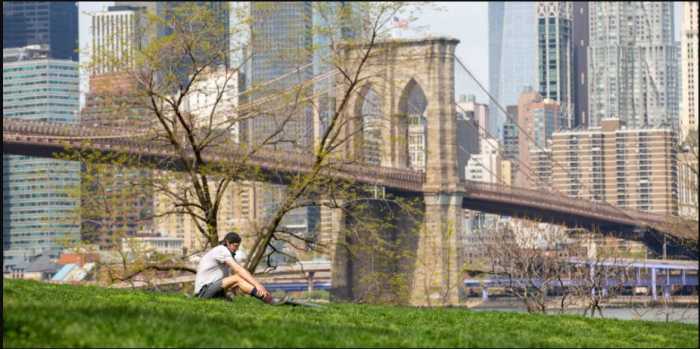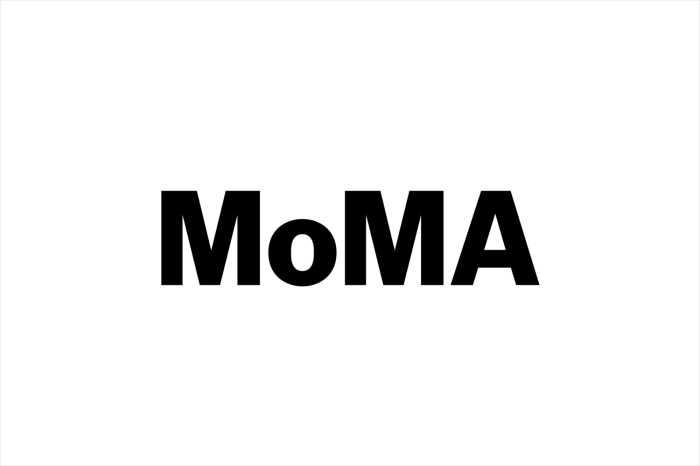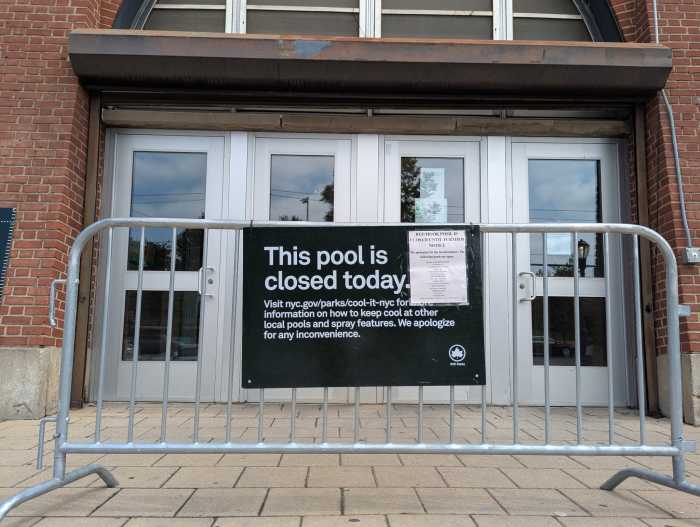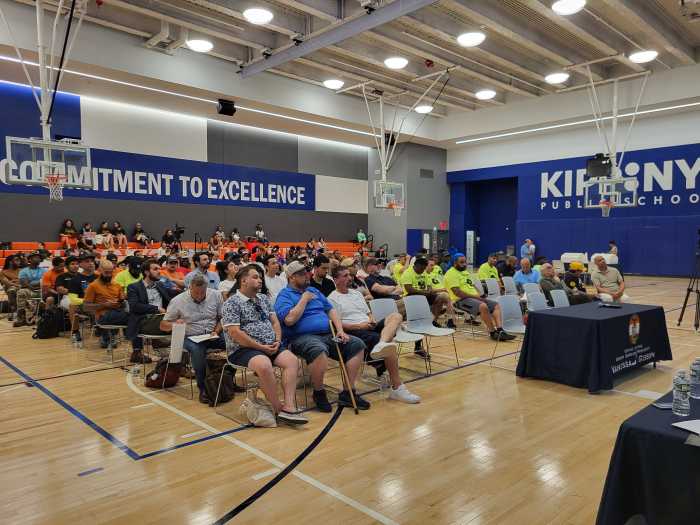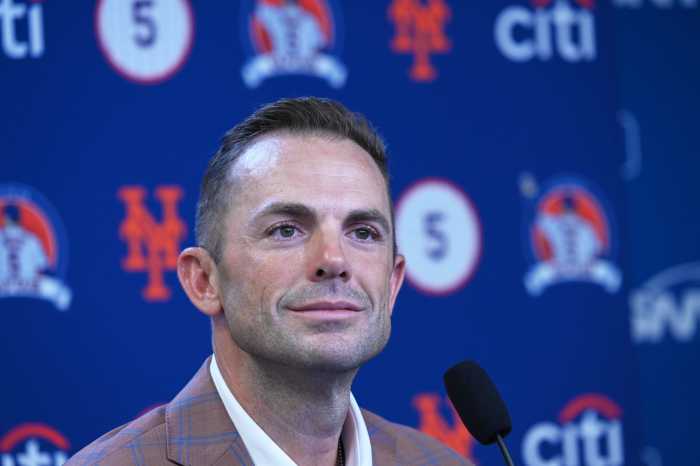As you enter Broadway’s Friedman Theatre to see “The Collaboration,” Anthony McCarten’s play recounting the dicey creative partnership between Andy Warhol and Jean-Michel Basquiat, you’re instantly uplifted by a DJ spinning ’80s pop tunes. Before long, a voice urges patrons to switch off electronic devices, including Walkmans.
Which efficiently sets the stage for the engaging albeit jagged drama, beginning in 1982, when their shared agent, Bruno Bischofberger (Erik Jensen), essentially tricks the artists into working together. The plan is to frame the joint exhibition as a boxing match between the two greats. Indeed, later we see the promo poster that depicts the men as bulldog pugilists.
The stunt is as intriguing as it is risky. Take one of the most celebrated artists in American history — older, established, queer, and white — who often relies on assistants to produce his silkscreens and other works. Then pair him with a Black, largely straight young upstart, a neo-expressionist who revels in spontaneity, abstraction, and fierce emotion — and watch the sparks fly.
How could Warhol, prince of pop images like Campbell’s soup cans and Marilyn Monroe, find common ground with Basquiat, who paints menacing skulls and cryptic graffiti-like scrawls?
Screen actor Paul Bettany does not strive for a dead-on impersonation of the insecure, self-loathing Warhol, but rather a convincing interpretation of the artist’s demeanor, posture, and deadpan humor. In doing so, he deftly sidesteps cliché.
“How long does it take Jean to do one of these art therapy things?” a baffled Warhol asks Bruno, with a mixture of wonder, dismay, and jealousy, eliciting chuckles from the audience.
For his part, Jeremy Pope, best known for dazzling musical turns in “Ain’t Too Proud” and “Choir Boy,” lends an appealing kinetic energy to Basquiat. The painting scenes call for him to move vigorously, doing a kind of jittery dance, and he rises to the challenge.
“I’m not here to bring Andy back from the dead,” the wunderkind snaps when Bruno first proposes the collaboration.
The spot-on costumes, by Anna Fleischle, and wigs, by Karicean Dick and Carol Robinson, go a long way in helping to complete the portraits of these iconic figures.
Much of the action takes place in Warhol’s tidy Union Square studio, with white brick walls and soaring ceilings (Fleischle also designed the impressive sets). Other scenes occur in Basquiat’s messy, paint-spattered space in the East Village, where Bruno discovers a stray heroin syringe. Gradually, the two men figure out how to work together. Maya (Krysta Rodriguez), Basquiat’s girlfriend, appears on occasion, in an underwritten role.
At key moments, the stage is filled with images of New York cityscapes, paintings, and choppy videos of the artists at work (Duncan McLean created the projections). After a young Black friend is brutalized by cops for painting graffiti, Basquiat is compelled to create a painting in his honor, a nod to the actual work “The Death of Michael Stewart” — a chilling precursor to the long overdue Black Lives Matter movement.
If you’re looking for a straightforward historical account of their relationship, with specifics like dates, you won’t find it here. Under the inventive direction of Kwame Kwei-Armah, what we see is a pastiche of impressions, a sort of theatrical equivalent of their combined paintings. Many of the moments, however, don’t jibe with documented facts.
Disappointingly, McCarten is more interested in the rise of the collaboration, not the demise. We do not clearly see their finished collaborative works. We never learn how the big joint exhibition in 1985 was received (it was panned), or about their falling out the following year, not long before Warhol dies due to complications of gallbladder surgery. The younger artist would die of a heroin overdose soon after, in an apartment he rented from his mentor’s estate.
“The Collaboration” also fails to capture the intensity of their friendship. A cursory internet search reveals snapshots of the smiling duo in warm embraces, vacationing together, visiting nail salons, and carousing. Basquiat allowed Warhol to photograph him wearing only a jockstrap. They even exchanged spectacular portraits, which would have been a natural episode to include in this intermittently amusing yet unsatisfying drama.
The Collaboration | Manhattan Theatre Club | Samuel J. Friedman Theatre | 261 W. 47th St. | $84-$185 | Through January 22, 2023 | manhattantheatreclub.com | 2 hrs with intermission

